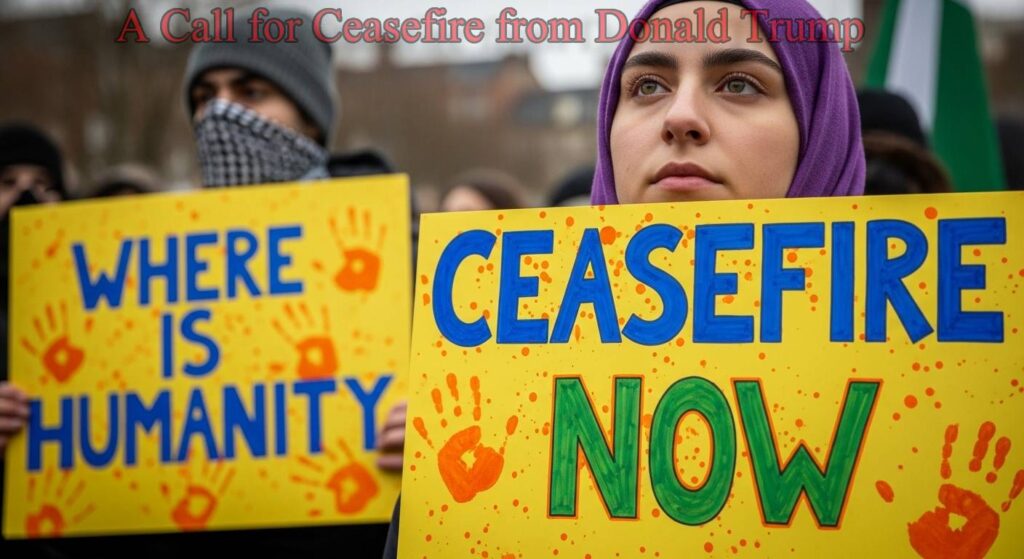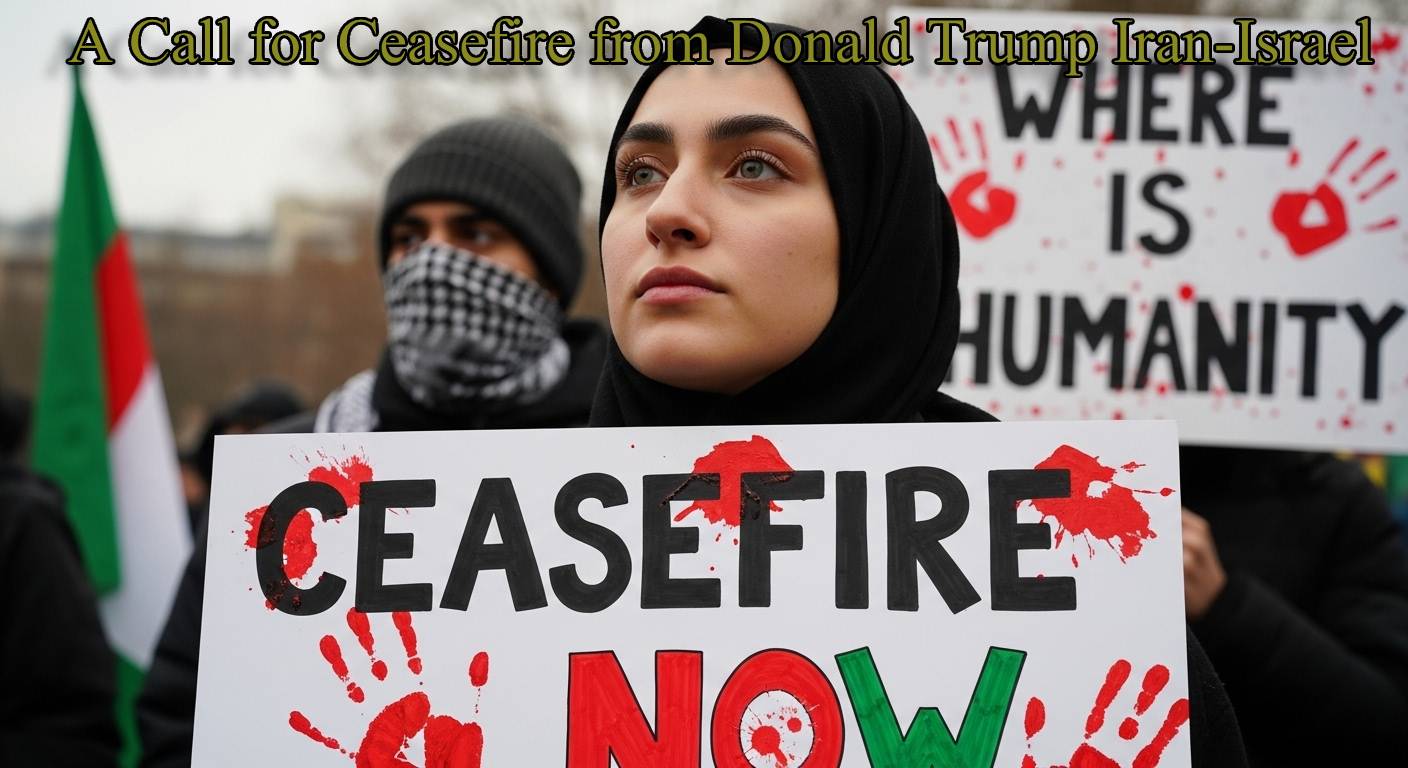President Trump declares ceasefire between Israel and Iran is now “in effect.” Get the latest reactions from Tehran and Jerusalem, the context of the “12-day war,” and analysis of this pivotal Middle East development on June 24, 2025
Today, Tuesday, June 24, 2025, the global community watches with bated breath as President Donald Trump announced that a ceasefire between Israel and Iran is now “in effect.” This unexpected development, coming after a period of escalating tensions and direct military exchanges, has sent ripples across the Middle East and international diplomatic circles. Trump’s declaration, made via his Truth Social platform, urges both nations to honor the truce, marking a potentially pivotal moment in a conflict that many feared was spiraling out of control.
Table of Contents
Israel-Iran: A Call for Ceasefire from Donald Trump
In the early hours of Tuesday, June 24, 2025, Donald Trump took to Truth Social to announce that a ceasefire between Israel and Iran had begun. His post read, “THE CEASEFIRE IS NOW IN EFFECT. PLEASE DO NOT VIOLATE IT.” This declaration followed earlier statements from Trump on Monday, June 23, where he first claimed that Israel and Iran had agreed to a “complete and total ceasefire” that would take effect in phases over 24 hours.
According to Trump’s timeline, Iran was expected to halt its operations first, followed by Israel 12 hours later. He hailed the agreement as the end of what he termed “THE 12 DAY WAR,” a conflict he suggested could have gone on for years and destabilized the entire Middle East. Trump attributed the success of the ceasefire to both countries’ “Stamina, Courage, and Intelligence” in seeking peace, even claiming they approached him “almost simultaneously” asking for a resolution.
While Trump’s pronouncements have often been met with skepticism for their unilateral nature, the immediate reports from both Iranian state media and Israeli officials have lent a degree of credence to the notion that a de-escalation, if not a formal ceasefire, is indeed underway.
Reactions from Tehran and Jerusalem: Caution and Contradiction
The immediate responses from Iran and Israel to Trump’s ceasefire announcement have been nuanced, reflecting their respective narratives and internal political dynamics.
Iran’s Stance: “Ceasefire For Now” and a Claim of Victory
Iranian state media, including Press TV, initially reported news of the ceasefire by framing it as a successful outcome of Tehran’s “decisive” military response to perceived “US aggression” and Israeli strikes. Some outlets even claimed that Trump had “begged” for the ceasefire, painting a picture of Iran imposing terms on its adversaries.
Iranian Foreign Minister Seyed Abbas Araghchi, while not explicitly confirming a formal “agreement” on a ceasefire, suggested on X (formerly Twitter) that Iran had ceased its strikes as of 4 a.m. Tehran time (8:30 p.m. ET Monday). He stated that Iran had “no intention to continue our response afterwards,” provided that the “Israeli regime stops its illegal aggression.” This conditional statement indicates a willingness to de-escalate, while still maintaining a stance of having achieved objectives and reserved the right to respond if aggression continues. Reports from Tehran suggest a halt in Iranian missile attacks, reinforcing the notion of a de-escalation initiated by their side.
Israel’s Position: Achieving Objectives and Conditional Acceptance
The Israeli government, through Prime Minister Benjamin Netanyahu’s office, confirmed its agreement to Donald Trump’s ceasefire proposal. However, their statement underscored that Israel had done so after “achieving the objectives” of its recent attacks on Iran. These objectives, according to Israel, included the removal of the “immediate existential threat” of Iran’s nuclear weapons and ballistic missiles, and “severely striking government targets in the heart of Tehran.”
Israel’s statement also included a warning that it would respond “forcefully” to any violations of the ceasefire. This conditional acceptance and emphasis on achieved military goals signal a cautious approach, maintaining deterrence while adhering to the proposed truce. Israeli military officials reportedly claimed to have successfully targeted Iranian missile launchers and inflicted damage on military leadership, further solidifying their narrative of a successful operation.
The Escalation: A “12-Day War” of Retaliation
The ceasefire announcement follows a period of heightened hostilities that Trump dubbed the “12 Day War.” This escalation began with Israeli strikes on Iranian nuclear facilities, which Israel described as “preemptive” and necessary to counter Iran’s alleged pursuit of nuclear weapons. These strikes, reportedly killing hundreds, were a significant escalation from previous shadow wars.
Iran responded with missile attacks on a U.S. military base in Qatar, Al Udeid Air Base, which houses US troops. While Iran called its response “devastating and powerful,” Trump dismissed it as “very weak,” claiming Iran had given “early notice” which allowed for no U.S. casualties. Simultaneously, Iran also launched multiple waves of missiles at Israel, resulting in four fatalities and numerous injuries in the southern city of Beersheba. Israeli emergency services confirmed deaths and extensive damage, indicating the severity of the Iranian retaliation.
The United States, after initially striking Iranian nuclear facilities and joining Israel’s efforts, found itself in a delicate position. Trump’s intervention to broker a ceasefire highlights the growing international alarm over the potential for a wider regional conflict. Reports suggest Qatar played a significant role in mediating Iran’s agreement to the ceasefire proposal, with Trump communicating directly with Qatar’s Emir and Prime Minister.

Implications of the Ceasefire: A Fragile Peace?
The declaration of a ceasefire brings a sense of cautious optimism to a region perpetually on edge. However, the true durability of this truce remains to be seen, and several key implications are worth considering.
- De-escalation of Immediate Conflict: The primary immediate benefit is the halt in direct military exchanges, reducing the risk of further casualties and the inadvertent triggering of a wider regional war. This provides a much-needed breathing room for diplomacy.
- Trump’s Diplomatic Role: For Donald Trump, this ceasefire serves as a validation of his unique approach to foreign policy and his self-proclaimed ability to broker peace. It could significantly bolster his political standing, particularly if the ceasefire holds. He has framed it as a major diplomatic achievement, contrasting it with protracted conflicts under previous administrations.
- The Nuclear Question: While Israel claims to have achieved its objectives regarding Iran’s nuclear threat, the underlying issue of Iran’s nuclear program and its uranium enrichment capabilities remains unresolved. The ceasefire may only temporarily pause direct military action, not necessarily the broader geopolitical tensions surrounding nuclear proliferation.
- Regional Stability: The Middle East is a complex web of alliances and rivalries. The stability of this ceasefire will depend heavily on the actions of various state and non-state actors, many of whom have vested interests in either peace or continued conflict.
- International Reaction: Global powers like Germany have already welcomed Trump’s ceasefire announcement, underscoring the international community’s desire for de-escalation. The success of this truce could influence future diplomatic efforts concerning the Iran-Israel relationship.
- Domestic Narratives: Both Iran and Israel are keen to present the ceasefire as a victory to their respective domestic audiences. Iran emphasizes its “successful” retaliation, while Israel highlights the neutralization of immediate threats. The ability of each government to manage these narratives will be crucial for maintaining public support for the truce.
The Path Forward: From Ceasefire to Lasting Peace?
While a ceasefire is a crucial first step, it is merely a halt in hostilities, not a permanent resolution to deep-seated conflicts. The long-term stability between Israel and Iran will depend on several factors:
- Adherence to the Truce: Both sides must consistently adhere to the terms of the ceasefire, avoiding any actions that could be perceived as violations and trigger renewed aggression.
- Diplomatic Channels: The effectiveness of indirect and direct diplomatic channels will be critical in building trust and addressing underlying grievances. The role of mediators like Qatar will remain vital.
- Addressing Core Issues: For lasting peace, fundamental issues such as Iran’s nuclear ambitions, regional proxy conflicts, and the broader security architecture of the Middle East will need to be addressed through sustained dialogue and negotiation.
- International Support: Continued support and pressure from the international community will be essential in encouraging both parties to maintain the ceasefire and work towards a more stable future.
Conclusion: A Moment of Respite, A Glimmer of Hope
Donald Trump’s announcement of an Israel-Iran ceasefire has ushered in a fragile moment of respite in a volatile region. While the long-term efficacy and stability of this truce remain uncertain, it offers a glimmer of hope that direct military confrontation can be averted. The coming days will be critical in determining whether this ceasefire holds and if it can pave the way for more substantive diplomatic engagement. For now, the world watches, hoping that the calls for peace, however unexpected their source, are heeded by all parties involved, leading to a de-escalation that benefits the entire Middle East.
